Contents
This article needs additional citations for verification .(March 2015) |
| |||
|---|---|---|---|
| Buildings and structures +... |
| 1530s · 1540s in architecture · 1550s |
| Architecture timeline |
This article needs additional citations for verification .(March 2015) |
| |||
|---|---|---|---|
| Buildings and structures +... |
| 1530s · 1540s in architecture · 1550s |
| Architecture timeline |



Lorenzo Lotto was an Italian Renaissance painter, draughtsman, and illustrator, traditionally placed in the Venetian school, though much of his career was spent in other north Italian cities. He painted mainly altarpieces, religious subjects and portraits. He was active during the High Renaissance and the first half of the Mannerist period, but his work maintained a generally similar High Renaissance style throughout his career, although his nervous and eccentric posings and distortions represented a transitional stage to the Florentine and Roman Mannerists.

Vincenzo Scamozzi was an Italian architect and a writer on architecture, active mainly in Vicenza and Republic of Venice area in the second half of the 16th century. He was perhaps the most important figure there between Andrea Palladio, whose unfinished projects he inherited at Palladio's death in 1580, and Baldassarre Longhena, Scamozzi's only pupil.
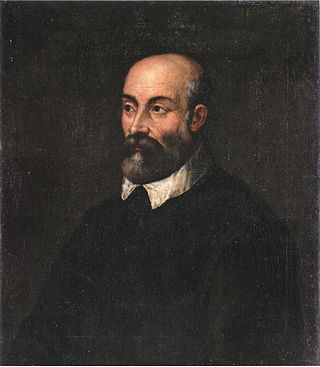
Andrea Palladio was an Italian Renaissance architect active in the Venetian Republic. Palladio, influenced by Roman and Greek architecture, primarily Vitruvius, is widely considered to be one of the most influential individuals in the history of architecture. While he designed churches and palaces, he was best known for country houses and villas. His teachings, summarized in the architectural treatise, The Four Books of Architecture, gained him wide recognition.

The Basilica Palladiana is a Renaissance building in the central Piazza dei Signori in Vicenza, north-eastern Italy. The most notable feature of the edifice is the loggia, which shows one of the first examples of what have come to be known as the Palladian window, designed by a young Andrea Palladio, whose work in architecture was to have a significant effect on the field during the Renaissance and later periods.
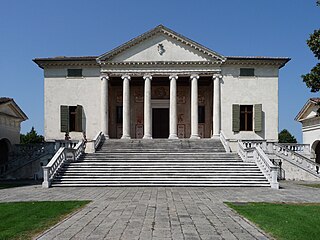
Villa Badoer is a villa in Fratta Polesine, in the Veneto region of northern Italy. It was designed in 1556 by Italian Renaissance architect Andrea Palladio for the Venetian noble Francesco Badoer, and built between 1557 and 1563 on the site of a medieval castle, which guarded a bridge across a navigable canal. This was the first time Palladio used his fully developed temple pediment in the façade of a villa.

Alessandro Vittoria was an Italian Mannerist sculptor of the Venetian school, "one of the main representatives of the Venetian classical style" and rivalling Giambologna as the foremost sculptors of the late 16th century in Italy, producing works such as Annunciation.
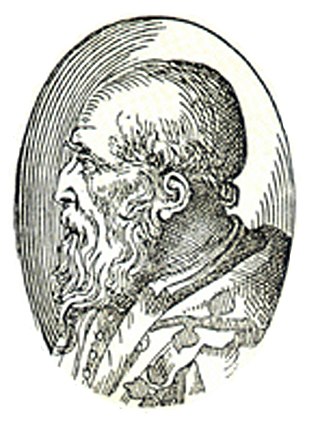
Michele Sanmicheli, sometimes also transcribed as Sammicheli, Sanmichele or Sammichele, was an Italian architect and urban planner who was a citizen of the Republic of Venice.
The decade of the 1480s in art involved some significant events.
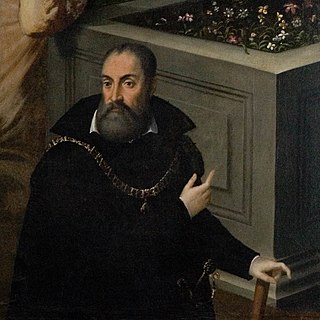
Ferrante I Gonzaga was an Italian condottiero, a member of the House of Gonzaga and the founder of the branch of the Gonzaga of Guastalla.
Events from the 1540s in England.

The Zecca is a sixteenth-century building in Venice, Italy which once housed the mint of the Republic of Venice. Built between 1536 and 1548, the heavily rusticated stone structure, originally with only two floors, was designed by Jacopo Sansovino in place of an earlier mint specifically to ensure safety from fire and to provide adequate security for the silver and gold deposits. Giorgio Vasari considered it the finest, richest, and strongest of Sansovino's buildings.
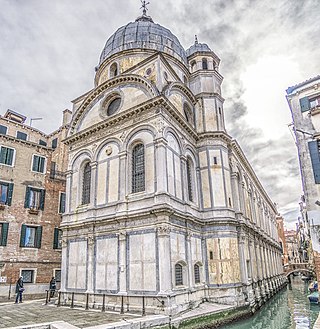
Venetian Renaissance architecture began rather later than in Florence, not really before the 1480s, and throughout the period mostly relied on architects imported from elsewhere in Italy. The city was very rich during the period, and prone to fires, so there was a large amount of building going on most of the time, and at least the facades of Venetian buildings were often particularly luxuriantly ornamented.
Events from the 1540s in Denmark.
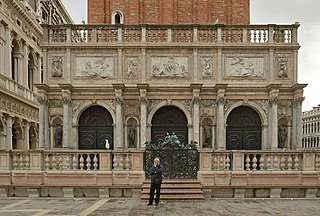
The Loggetta is a small, richly decorated building at the base of the bell tower in Saint Mark's Square, Venice, Italy. Built by Jacopo Sansovino between 1538 and 1546, it served at various times as a gathering place for nobles and for meetings of the procurators of Saint Mark, the officials of the Venetian Republic who were responsible principally for the administration of the treasury of the Church of Saint Mark and for the public buildings around Saint Mark's Square.
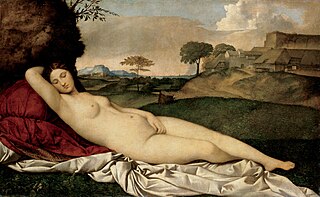
The Venetian Renaissance had a distinct character compared to the general Italian Renaissance elsewhere. The Republic of Venice was topographically distinct from the rest of the city-states of Renaissance Italy as a result of their geographic location, which isolated the city politically, economically and culturally, allowing the city the leisure to pursue the pleasures of art. The influence of Venetian art did not cease at the end of the Renaissance period. Its practices persisted through the works of art critics and artists proliferating its prominence around Europe to the 19th century.